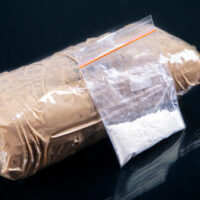Current Government Approach to Ontario’s Mental Health and Addiction Treatment
Introduction In this month’s Provincial Snapshot, we look at Ontario’s mental health and addiction strategy and the subsequent updates and recommendations. Every month we look at another province, and what their provincial government’s approach to mental health and addiction treatment is. For April, we assess Open Minds, Healthy Minds, Ontario’s Comprehensive Mental Health and Addictions Strategy released in 2011. The four guiding goals for this strategy were “improve mental health and well-being for all Ontarians; create healthy, resilient, inclusive communities; identify mental health and addictions problems early and intervene; provide timely, high quality, integrated, person-directed health and other human services.” Following the 2011 Mental Health and Addictions Strategy, a Mental Health and Addictions Leadership Advisory Council was formed in 2014 to ensure the implementation of the Strategy. In 2015, this council released their first annual report with recommendations on how the work is going. The council outlined five priority areas for continued focus: prevention, promotion, and early intervention; youth addictions; supportive housing; system alignment and capacity; and community mental health and addictions funding reform. In 2016, the council released their second annual report which looks again at these priority areas and any improvement. This blog will focus on these priority areas and associated recommendations to give the most up to date assessment of Ontario’s progress. 2015 Recommendations for Drug Rehab, Alcohol Treatment, and other Addiction Programs In 2015, Ontario’s mental health and addiction advisory council unanimously supported urgent action be taken on five recommendations: Make it easier for young people to transition from youth to adult mental health and addictions services and supports Expect the same focus on quality from Ontario’s mental health and addictions system as you do from other parts of the health care system Move on key First Nation, Metis, Inuit, and urban Aboriginal mental health and addictions needs. – The Ontario government needs to prioritize funding for nurse practitioners to be able to prescribe Suboxone. Also, allow for Indigenous mental health programs and infrastructure to work parallel with the Ontario government programs. Prioritize investments in supportive housing focused on meeting the needs of individuals with mental illness and addictions. – Multiple government strategies have suggested more affordable housing and it is time to deliver on these recommendations. Clarify which provincial ministry should lead the development and implementation of youth addictions policy and programming. – There are two different ministries currently both sharing responsibility. To improve service delivery just one ministry in charge is recommended. 2016 Reflections on 2015 Recommendations In 2016, the council revisited some of their recommendations to see what, if any, progress had been made in Ontario’s mental health and addiction services. Two ministries are still sharing responsibility for youth addictions but they have worked together to look for service gaps and how to improve them. Quality guidelines were laid out to ensure a high quality of care across community programs. A number of organizations and ministries are working together to evaluate priorities for Indigenous mental health. There is also work being done to enable Suboxone prescribing by nurse practitioners, a key recommendation from 2015. Housing remained the same with no further money allocated to supportive housing since 2014. 2016 Recommendations Finally, a look at the three recommendations to come from the council’s 2016 report to improve Ontario’s mental health and addiction support systems. The first recommendation has been one of the council’s guiding principles since the beginning; promote, prevent, and intervene early. This is a smart recommendation, as “70% of mental health and addiction issues begin in childhood or adolescence and can contribute to physical health problems, poor educational outcomes, and involvement with...
Drugs: A Key Focus of the Liberal Convention
As we previously reported on, Halifax hosted the Liberal National Convention this past week. Party members voted on proposed resolutions that should become official party policy and guide future policy decisions. However, technically these resolutions are nonbinding, and because Justin Trudeau and party elite are not proponents of some of the resolutions, they may not be included in the 2019 platform. The outcome of the convention clearly shows a left-leaning, forward-thinking young Liberal membership hungry for drugs reform. Among the resolutions passed were: Address the Opioid Crisis through a Public Health Approach Implementing Universal Access to Necessary Medicines Inclusion of Mental Health Services in Medicare and the Canada Health Act Decriminalization of small possession of all illicit drugs Despite being one of the most popular resolutions to pass, the proposition for decriminalizing small amounts of illicit drugs was flatly dismissed by the Prime Minister immediately following the convention. The Health Minister was inline with the PM, saying the Portugal Model of decriminalization could not work in Canada. While the Justice Minister did say the government had no plans to institute widespread decriminalization, she was open to listening to the arguments for decriminalization of small amounts of illicit substances. Universal Pharmacare As Edmonton Centre MP Randy Boissonnault commented, universal prescription coverage has been on the Liberal docket some twenty years. A resounding yes vote on this shows that the Liberal membership wants universal pharmacare, whether its likely to come about soon is questionable though. The Canadian public would save billions annually on prescription costs, while it is estimated the government would spend an additional 7 bil to accommodate. Trudeau seems hesitant on any resolution that requires loosening the purse strings. This seems to be yet another member-supported progressive policy that has proven success in other countries, but that may not see the light of the 2019 election platform. We will continue reporting on the progress from propositions to actual policy as the lead up to the 2019 election continues. References: Pharmacare, Decriminalizing Drugs and Mental Health Services Top Priorities for Grassroots Liberals Liberal Leadership and Grassroots Members Appear to be on a Different Path at Policy Convention: Chris Hall Liberal MP Still Wants Drugs Decriminalized Despite Health Minister’s Objection Liberal Caucus Supports Decriminalization The post Drugs: A Key Focus of the Liberal Convention appeared first on Canada Drug...
Addiction to Remission: Recovery Terminology to Know about Drugs and Alcohol
When working on your substance use issues, you’ll encounter some recovery terminology you may not know yet. A lot of the terms sound similar but have quite different meanings. Read on to learn more about what industry professionals mean when they use them, and how they apply to your journey. The American Society of Addiction Medicine (ASAM) is one of the resources used to compile this list of terminology. It is an authority in the world of addiction medicine, and also acknowledges that terminology is always changing, so is a good current frame of reference. Addiction ASAM’s short definition of addiction is: “Addiction is a primary, chronic disease of brain reward, motivation, memory and related circuitry.” Not everyone subscribes to the concept of addiction being a disease, however the physical impact on the brain is often very real. Our brains can be rewired many times over, and addiction is a very capable electrician. It is also important to note here that certain characteristics must be present to confirm a true addiction. A quick test is the Three C’s, compulsion, control, and consequences. Compulsion is the obsessive behaviour preceding using (i.e. daydreaming about next use). Control is what happens after using (i.e. no control to set limits, engaging in unhealthy behaviour in order to use). Consequences are what truly seals the addiction definition. Continuing to use even after being faced with negative consequences like losing a job, family, or having trouble with the police. Recovery “A process of sustained action that addresses the biological, psychological, social and spiritual disturbances inherent in addiction.” Recovery is the journey to remission. Whether the client is in outpatient or inpatient treatment, the work they are putting in is their recovery. Recovery is not a linear journey but it is the “sustained action” that counts. Remission “A state of wellness where there is an abatement of signs and symptoms that characterize active addiction.” In a disease model, remission means the disease is out of the system and is no longer causing concern, like when someone goes into remission from cancer. Therefore, this is the word used to demonstrate that a client is now functioning like a person without an addiction. Relapse “A process in which an individual who has established abstinence or sobriety experiences recurrence of signs and symptoms of active addiction, often including resumption of the pathological pursuit of reward and/or relief through the use of substance and other behaviours.” Relapse can be very disheartening, however, it is very common. Just like learning to ride a bike, a client should expect a few falls along the way. The client is learning healthy behaviours and making huge life changes to get to a remission state. As mentioned above, the most important thing is to get back on the recovery journey and keep trying. Abstinence “Intentional and consistent restraint from the pathological pursuit of reward and/or relief that involves the use of substances and other behaviours.” Abstinence is promoted by numerous organizations and is the crux of many philosophies. However, abstinence as a concept really does not hold up under scientific scrutiny. Abstinence sees the drug as the problem and the reason for the addiction. If this were true, however, everyone who drank alcohol or tried a drug would become addicted. It has been proved many times over that in order to prevent addiction we must look at the individual. Why is this person drawn to becoming intoxicated? Do they have an undiagnosed mental health issue, have they experienced trauma, are they in a less than ideal work/living/family situation? When we answer these questions we usually find the...
Help Finding Public Drug and Alcohol Treatment in Ontario
This month, learn how to access public drug and alcohol treatment in Ontario in the next installment of Provincial Snapshot. Each month, we are outlining the steps you must take to access public drug and alcohol treatment in each province. This blog will detail how to access different levels of addiction and mental health care. If you or someone you know requires urgent help, please call 911. Drug and Alcohol Helpline If you have substance use problems, Ontario is one of the best provinces to be in! The province has set up a drug and alcohol helpline that is available 24/7 free of charge. Call to be connected with an information and referral specialist who is knowledgeable on all things public drug and alcohol treatment in Ontario. They can provide up to date information on treatment providers, crisis lines, self-help groups, distress centers, and family services. This includes giving you your closest outpatient office, detox clinic, or health unit. A special feature about this helpline is that they can provide current wait times for all provincially run facilities, giving you a good idea of what your immediate options are. The only thing to note is that this helpline only deals with Ontario and its publicly-funded options. Therefore, all the advice they give is for OHIP-funded facilities. This is a really good start, but if you are looking for private options as well, give our specialist a call and they can give you all the other options. Many Options to Access Public Drug and Alcohol Treatment in Ontario You may not need to go to an outpatient office like in other provinces for a referral to treatment. In Ontario, you can often get a referral from your family physician if they have a documented history of your mental health or substance use concerns. Addiction Supportive Housing (ASH) is a program designed for clients who have tried addiction treatment programs before and need some extra help transitioning to ‘real life’. Some clients may have tried a few times, but have not been able to make their recovery stick. Others may be at risk of homelessness and need a safe and supportive environment to continue their recovery. If a potential client is assessed as having a high probability of a successful recovery in this style of supportive housing treatment program they can be admitted. There are many ASH houses across the province, you can contact the previously mentioned helpline here to find your closest ASH program. If you are looking for public drug and alcohol treatment in Ontario and need some assistance, please contact our specialist. Be sure to check out the page on Toronto drug rehab and alcohol treatment programs. References: Drug and Alcohol Helpline ASH Program The post Help Finding Public Drug and Alcohol Treatment in Ontario appeared first on Canada Drug...
Alcohol Awareness Month: Targeting Underage Drinking
This year’s theme for Alcohol Awareness Month is Changing Attitudes: It’s not a ‘rite of passage’ in an effort to curb underage drinking. Since 1987, the National Council on Alcoholism and Drug Dependence (NCADD) in the USA has hosted Alcohol Awareness Month every April. It’s important to note that NCADD was founded by an Alcoholics Anonymous (AA) proponent. This means their focus is on abstinence and directing to teaching teens to say no to alcohol. During awareness months, NCADD spearheads events to educate the public on the prevention and treatment of alcoholism. This year they will be specifically helping parents in how to talk to their children and teens about the impact alcohol can have on their lives. Underage Drinking Underage drinking is considered one of the biggest public health problems in the USA. Alcohol is still the most used intoxicant by young people. 33% of 15-year-olds have had at least one drink, and 60% of 18 years olds have had at least one drink. A hidden danger is that while youth drink less frequently than adults, they consume 90% of their alcohol during binge drinking periods. Binge drinking is defined as 5 standard drinks for men and 4 standard drinks for women within a few hours. Keep in mind, most people don’t consume a standard drink. A standard drink contains 14 grams of pure alcohol which looks like a 12 ounce of beer with a 5% alcohol content or a 5-ounce glass of wine with 12% alcohol. How many people do you know who measure out 5 ounces of wine when they pour a glass? Even restaurants have a 6 or 9-ounce option when ordering wine, which instantly takes you over a standard drink. Prevention and Alcohol Treatment The age-old saying Monkey See Monkey Do is a saying for a reason. We are heavily influenced by our environment, especially during childhood. Children of alcoholics are between 4 and 10 times more likely to have alcohol use problems later in life than children with no close relatives who struggle with alcohol. However, the National Institute on Alcohol Abuse and Alcoholism (NIAAA) in the US offers scientific methods for underage drinking prevention. These include environmental interventions, individual-level interventions, school-based interventions, and family-based interventions. Environmental refers to making alcohol harder to get through laws and enforcement, which isn’t really something parents can control. However, the other three interventions are all variations of being involved in the child’s life. For example, making sure they are educated about alcohol and getting them involved in fun, sober activities. If you would like to learn more, the resources referenced here are linked below. Additionally, if you are concerned about a child or teen in your life, please contact our specialist here to learn about available resources near you. This website serves as your gateway to information on drug rehab and alcohol treatment programs in Canada, from Toronto drug rehab programs to Vancouver alcohol treatment programs, etc. References: NIAAA: Underage Drinking NIAAA: Why do adolescents drink, What are the risks, and How can underage drinking be prevented? NCADD: Alcohol Awareness Month The post Alcohol Awareness Month: Targeting Underage Drinking appeared first on Canada Drug...
Drug Fact Sheet: Fentanyl and Carfentanyl
Fentanyl and carfentanyl belong to the group of drugs known as opioids. They are currently both in the news in relation to the “opioid crisis” that is gripping North America, both Canada and the United States. Fentanyl was created for human use, while carfentanyl was only ever intended for large animal use like elephants. However, these substances are both being found in illicit drugs being marketed as heroin, MDMA, or cocaine. During Prohibition times in the USA, bootleggers used more and more unsafe chemicals in their alcohol to keep costs down and potency up. As the war on drugs continues in North America today, drug dealers are turning to substances that are stronger and cost less to manufacture. Police warn that street drugs are almost never what the dealer says, let alone a pure version. Fentanyl Fentanyl is approximately 100 times stronger than morphine and is prescribed for severe chronic pain. It is a depressant, meaning it slows the messages traveling between the brain and the physical body, which is why it helps alleviate pain symptoms. However, an overdose of fentanyl means its depressant qualities are heightened, leading to a relaxing of muscles in control of automatic functions like breathing. Carfentanyl Carfentanyl or carfentanil was first synthesized in 1974 as a variation (also known as an “analogue”) of fentanyl. It is the strongest commercial opioid, 100 times stronger than fentanyl, 5000 times stronger than heroin, and 10,000 times stronger than morphine. Carfentanyl affects the human body at only 1 microgram. It is used as a general anesthetic for large animals. The strongest fentanyl analogue designed for human use is sufentanil which is approximately 10 – 20 times less potent than carfentanyl. One shot of Naloxone, the opioid overdose reversal medication, is usually all that is needed for a heroin overdose. However, an overdose involving carfentanyl can take more than half a dozen shots of Naloxone to overcome. A dose of carfentanyl the size of a grain of rice can kill a human. Due to the intense toxicity of this substance, authorities consider it a possible biological weapon. In 2016, the Mounties seized a kilogram of carfentanyl in Vancouver that, due its purity, had the potential to kill 50 million people, more than our entire Canadian population. A spokesperson for the RCMP said when the police seize regular street drugs like cocaine and heroin the intent for the shipment is known. However, because carfentanyl is so potent, large shipments could mean much more sinister motives. Fentanyl and carfentanyl are some of the most toxic substances a human can ingest. If you are concerned about what could be in your drugs and are looking to make a change, contact our specialist for help and resources. This website is a resource of drug rehab and alcohol treatment programs throughout Canada – from Vancouver to Toronto, Calgary to Ottawa, and everywhere in between. Rehab from drugs and alcohol addiction is possible. References Alcohol and Drug Foundation: Fentanyl PubChem: Carfentanil Guardian: Alarm After Canada Carfentanil Bust CBC: Deadly Opioid Carfentanil Bound for Calgary Seized in Vancouver The post Drug Fact Sheet: Fentanyl and Carfentanyl appeared first on Canada Drug...









